When the DHC-2 Beaver pontoon plane lifts off Lake Laberge and quickly shrinks in the Canadian sky, there’s no avoiding the realization of just how isolated our party, disgorged onto shore, now finds itself, days distant from the nearest town. So attention purposely swivels to our massive pile of gear. First up, we set to the task of unrolling and inflating the rugged standup paddleboards that will be our life support for the next four days.
Guide Stu Knaack provides lessons in Zen and the art of bungee-cord maintenance (hint: use lots), demonstrating the finer points of hooking, stretching, wrestling, and wrapping them to the board’s nose and tail attachments to rig dry bags, air pumps, and food barrels. As we inch the obscenely weighted SUPs toward water’s edge, he rattles off obligatory safety protocols, mostly concerning local wildlife: how to identify wolf tracks, react when a moose drops its ears, and aim bear spray (up the approaching beast’s muzzle). Oh yeah, and actual paddling stuff, too, cautioning us to stay together out on the river, which while predominately flat, is also wide and plenty swift.
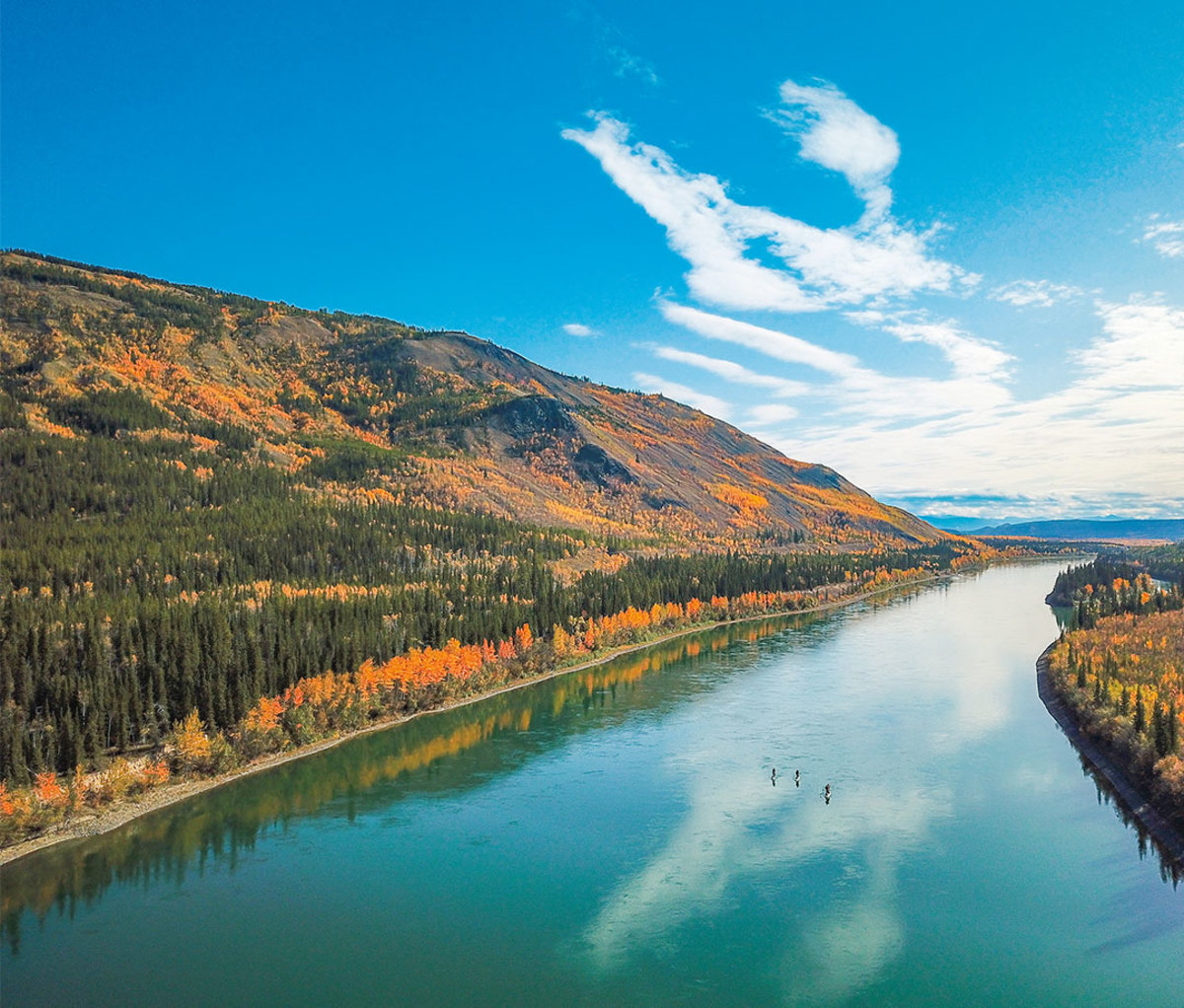
“If you fall in,” calls Knaack, “get out and change all of your clothes as fast as you can manage—hypothermia will set in immediately.”
Luckily, our party of five remains dunk-free while nosing into the Yukon River’s current. At more than 12 feet long, our inflatable boards bear the gear’s weight, and steering and propelling the load doesn’t require heroic exertion. Within seconds, our launch beach retreats from view. We’re here. The boreal Yukon landscape slides by in brilliant golds and greens, contrasting the water’s fluid turquoise. Questions start flying from every direction: Hey, Stu, what’s the volume of this river? Tens of thousands of cubic feet every second; third longest river on the continent. Stu, whose land is this? First Nations—Little Salmon Carmack, Kwalin Dun, Ta’an Kwach’an, Champagne & Aishihik—and Government of Yukon. Hey, Stu, how often is this section used? Stu, where are all the people?
Branches rustle on shore. Hey, Stu, what kind of bird is that?
“That,” Knaack barks before collecting himself, “is a duck.”
We bust out laughing at our overeager pounce on the excursion’s unfolding novelty. Sometimes, a wild experience doesn’t need to be so complicated.
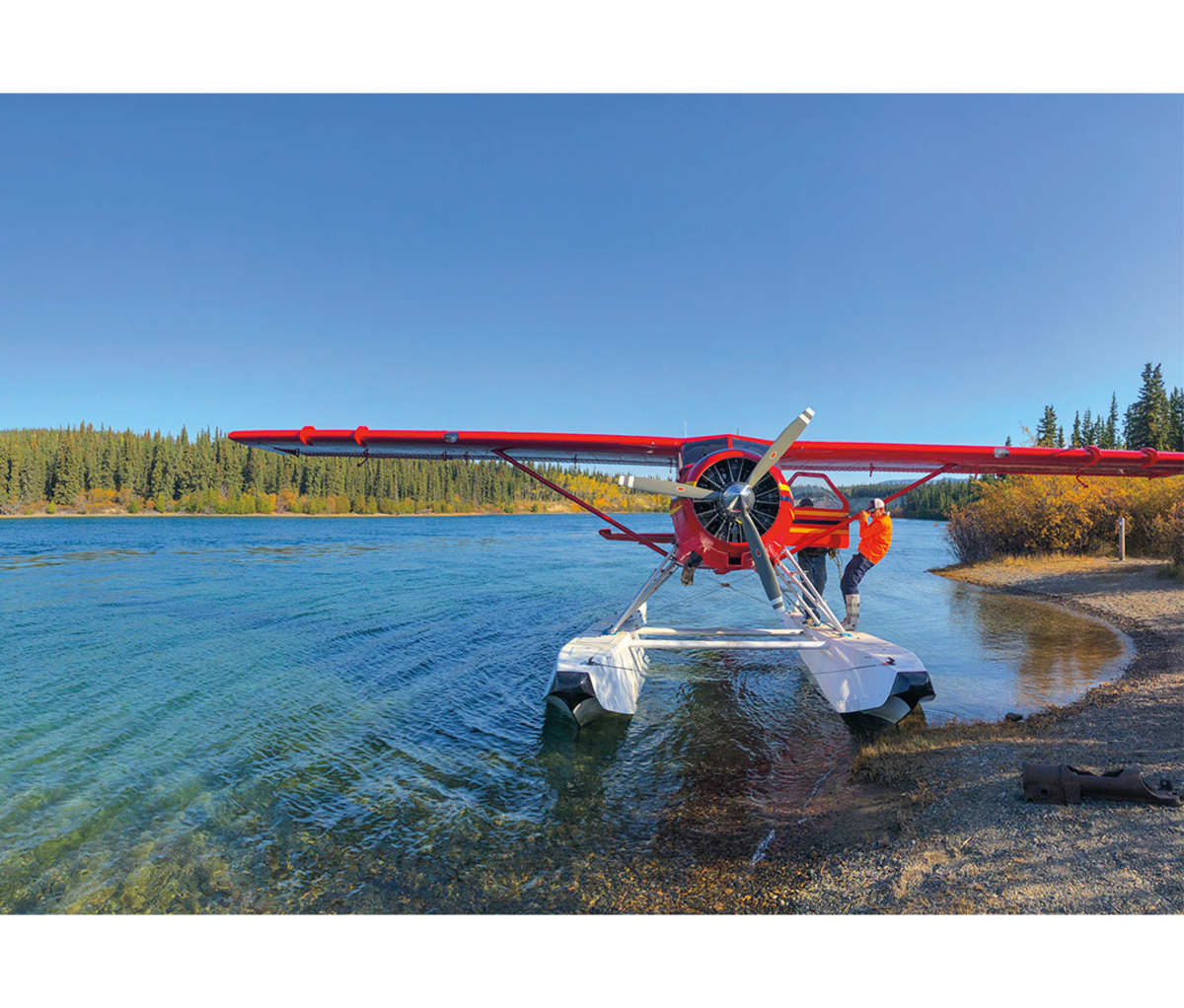
The Wide Open Empty
Why Yukon? I’d put that same question to a friend who has paddled around the globe—literally. National Outdoor Leadership School senior instructor Zand Martin took five years to complete a 15,000-mile, human-powered series of expeditions across North America, Europe, Mongolia, Siberia, and the Russian Far East. For superlative, extended river miles, he didn’t hesitate in pointing to Yukon, claiming it as nothing short of the most temperate, wide-open paddling destination on the planet. Alpine scenery streaked with seemingly endless amounts of clear, undammed, steep, and steady rivers—that’s one thing. The lack of bugs, and other humans, is the other.
“It’s a different experience.” That’s how Knaack simply put it as our group’s flights from across the States converged in Whitehorse, the capital city that claims 28,000 of the territory’s 32,000 residents. (For reference, that’s about 3 percent the population of Montana, which is slightly smaller in area.) Beyond offering several craft breweries and Tim Hortons, Yukon’s lone city is a logical launchpad for any ventures farther afield. And though it’s perfectly feasible to start a Yukon River journey from a central city park, we took the puddle-jump Beaver flight to bypass the 30 miles of Lake Laberge flatwater that slow down initial progress heading north out of civilization.
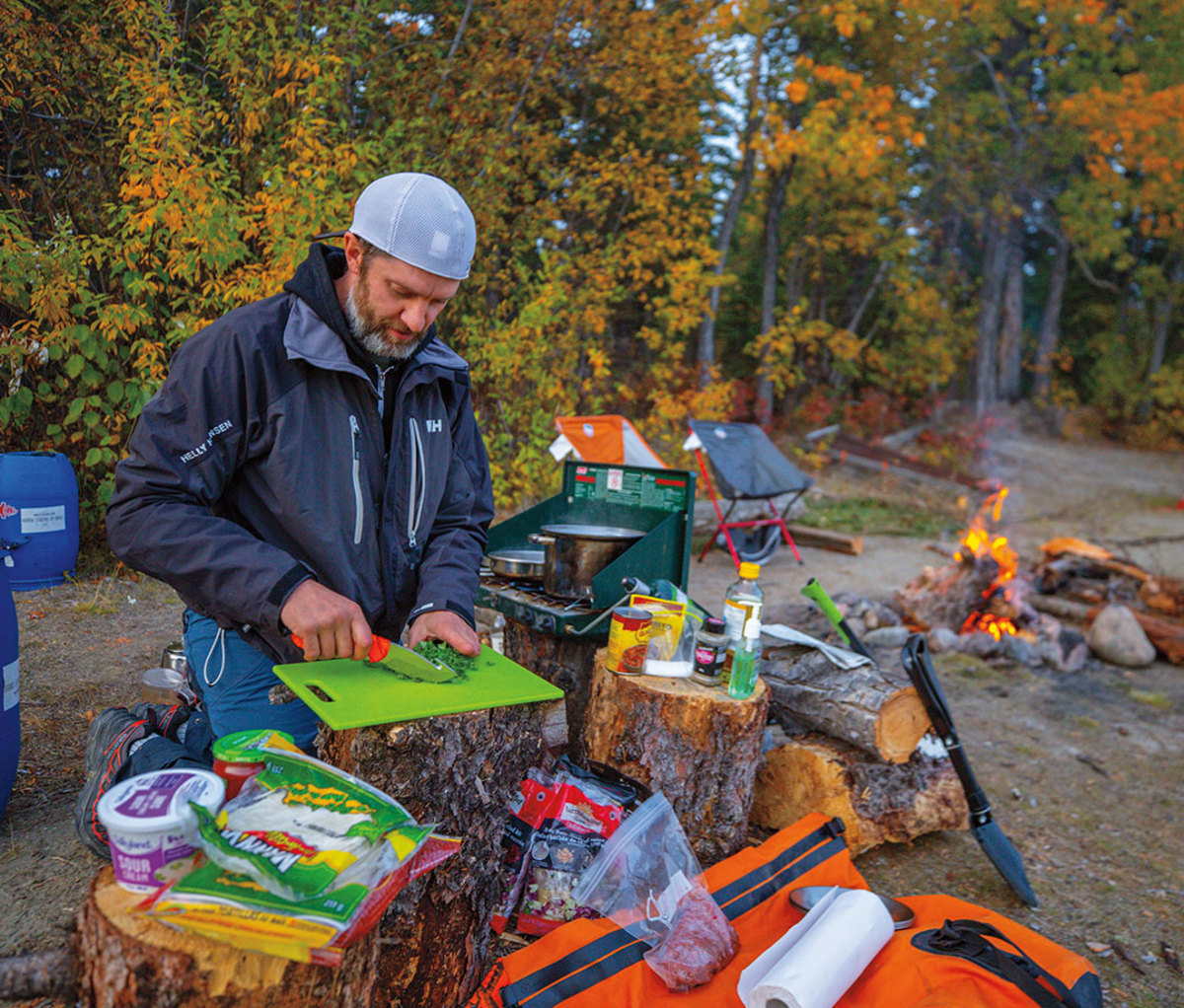
We don’t see another soul until the end of our first day on the water. Just past the confluence of the Teslin River, we spot a solitary kayaker, plodding along. Soon after, we set up camp in the shadow of a visceral reminder of lives spent traversing this storied northern thoroughfare, where prospectors rushed to stake claims during the Klondike Gold Rush at the close of the 19th century: the beached, rusted remains of the steamship Evelyn/Norcom. This 130-foot stern-wheeler navigated springtime flows up the section we just paddled until abandoned a century ago. Stairs from galley to intact upper decks offer a journey-in-time invitation to explore—one that better judgment, upon noting the rotting planks, declines.
Plus, after a full day paddling, Knaack’s food barrel is more enticing. On a makeshift table, he pops the clasp on the bear-proof container and empties a clown car’s worth of sustenance. Over fire and a basic Coleman two-burner, he whips up rib-eyes, shrimp, corn, and even blueberry cheesecake. Then, with a little Irish whiskey in him, our imposing, somewhat stoic guide begins to slow down and open up.
Though he wasn’t born in the territory, he grew up here and jokes about how multigenerational Yukoner friends granted him “BNR” (born and raised) status. After starting work surveying area diamond mines, an accident took the tips of fingers on his left hand and made him reassess his career options. He traveled to Thailand, where an outfitter put him on a standup paddleboard for the first time in 2010. A light bulb switched on, and Knaack returned home to launch Stand Up Paddle Yukon for instruction and tours a year later. “I wanted to live life at a more relaxed speed, keeping things in perspective,” says Knaack. He also fostered the SUP division of the Yukon River Quest, a mainstay event in endurance canoeing and kayaking circles billed as the world’s longest annual paddling race, at 444 miles from Whitehorse to Dawson City.
Knaack, who manages a flooring business in the off-season to keep the summer dream alive, beams enthusiasm when describing the potential for using SUPs for multiday wilderness outings on this frontier. He hints at other self-support trip ideas linking hot springs–based itineraries, and others with interesting rail-in, float-out wrinkles—all made possible by advances in more rugged inflatable boards capable of being packable, loadable, and abused for days on end. Knaack recently lost some time in the field, sidelined for a year by a battle with throat cancer, so there’s catchup urgency to his plans. “Now I want to live two lives in this lifetime,” he says. “Life’s a ride, you know?”
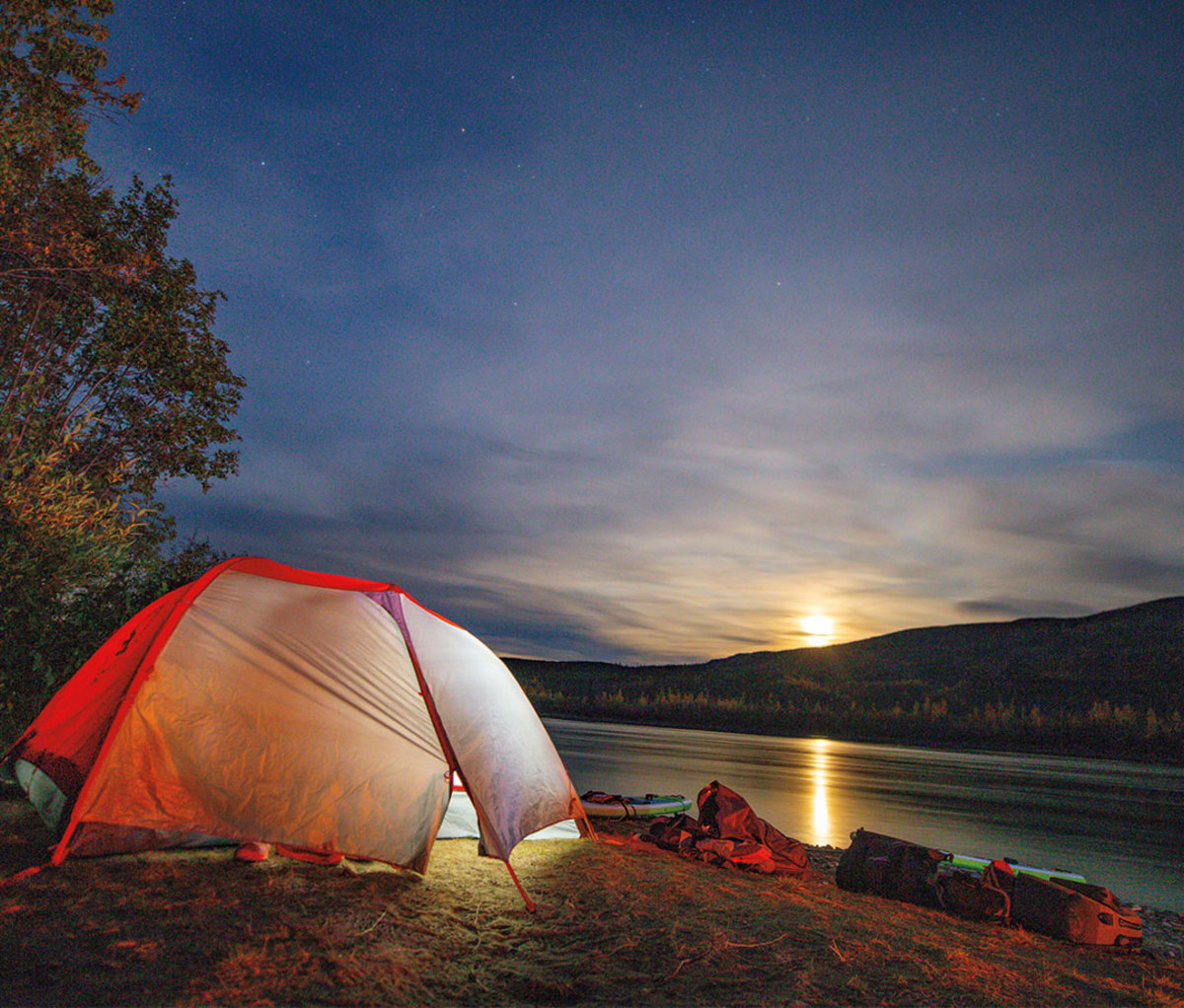
Getting Into the Flow
Big rivers have a way of delivering perspective, and a healthy dose of escapism. After dinner, I pop my tent in the reeds above the high-water mark, still within earshot of the river’s steady hum, and sleep soundly. I wake to witness fog lifting from the constant conveyor belt of water below. And it’s no meander, with the Teslin’s input nearly doubling the flow, rolling past at 7 mph.
After a little morning sun, hot breakfast, and board rerigging, the second day on the water—standing on that belt, surrounding landscape blurring—offers some subtleties. Not all current is equal, with every bend and bottom contour providing different speeds and nuances. It’s like merging onto a highway where the fast lane suddenly switches to the middle, then jumps over to the shoulder and, if you’re not paying attention, flips back the wrong direction in slack water behind an island.
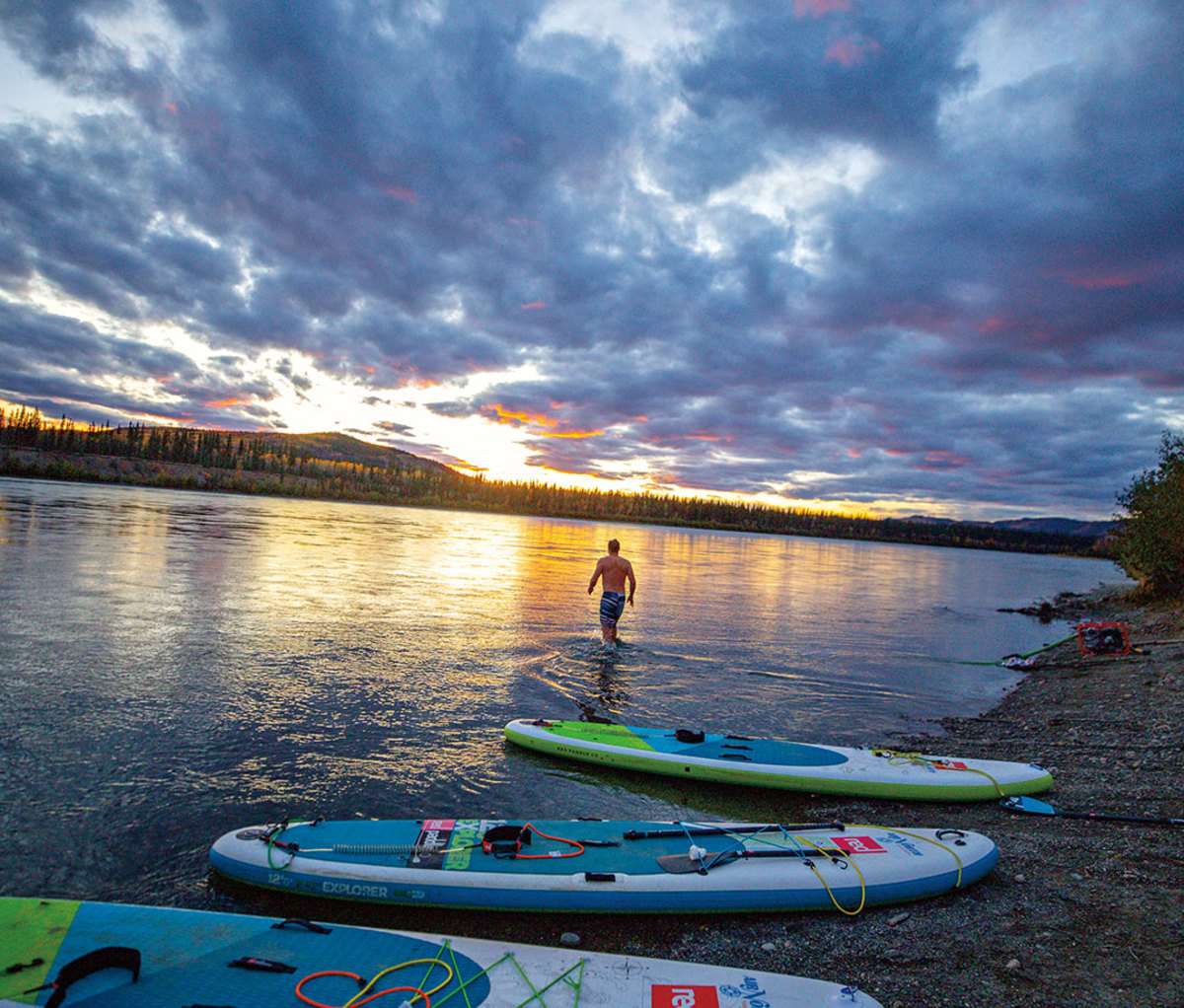
As our group drifts onward, the solo kayaker we’d seen the day before rounds a corner and leapfrogs us. We exchange a few pleasantries with the Belgian man, wearing what looks to be a beaver-skin hat. Despite his relaxed pose, we can’t help but consider his lower body confined for the balance of a day. Being on a SUP keeps legs and core active and helps pass the time—moving around, switching up stances, hammering strokes, easing up. And if knees or hips tire, or you hit a troublesome headwind, there’s always the option to kneel, or even sit down, back wedged against the bungeed load on the tail. Paddling a canoe or kayak doesn’t allow the same flexibility, plus standing also provides a higher vantage point for reading dynamic water.
The counterintuitive urge to stand and paddle for hours straight—hypnotized by swirling ripples, undercurrents, and eddy lines, ever searching for the fast water—isn’t unique to sponsored pros. Interest in endurance events has been trickling down to mortal standup paddlers as the SUP race community has continued its global expansion, though leveling out recently in North America after the big boom of the mid-2010s.
A ride on the Yukon River is not just a frontier experience because of the unconventional craft. The salmon skeletons discarded by eagles on the beach where we take a break offer a reminder of our place on the fringe, as do the ruins of a gold dredge mud-bound near our eventual wooded camp that evening.
With boards derigged, bags unstuffed, and tents set up, I wander downriver, strip down, and take three full dips under the frigid flow. Screaming off the cold as I shake off the water and mental clutter, I feel as good as I have in years, immersed in rolling sheets of water glowing amber in the sunset. All the planning and paddling were worth it—finding this moment, this clean, screen-free sense of self, this body sore from a full day making long miles, dinner and sound sleep ahead, and nothing but a sprawling horizon and unknown possibility before me.
The landscape keeps transforming as we continue winding the next day, from braided sections through gravelly side-hills to rocky mountains constricting a tight corridor that echoes our enthusiastic hoots. Eagles take flight as we advance past their perches. Dall sheep graze on the ridgeline. We pass through pristine Settlement Land owned by the Little Salmon Carmacks First Nation, and Knaack tells us there is, thankfully, little pressure to develop here. I wonder how long an open highway to unfettered wilderness can remain such a holdout.
The suspense of what new sight awaits around each bend lingers as day fades into early evening. The miles, pushing close to our target of 142, are taking a physical toll. Of more immediate concern, daily gorp ration bags are running thin.
Then, cruising by a thicket of reeds, we spot a hose running up to a humming generator pump. As soon as Knaack starts laughing with a man on the shore, we know something is up. Only a few miles short of our takeout in the small village of Carmacks, Knaack has arranged for our shuttle driver, Andrew, to run a few items in a flat-bottomed jon boat upriver to our final camp.
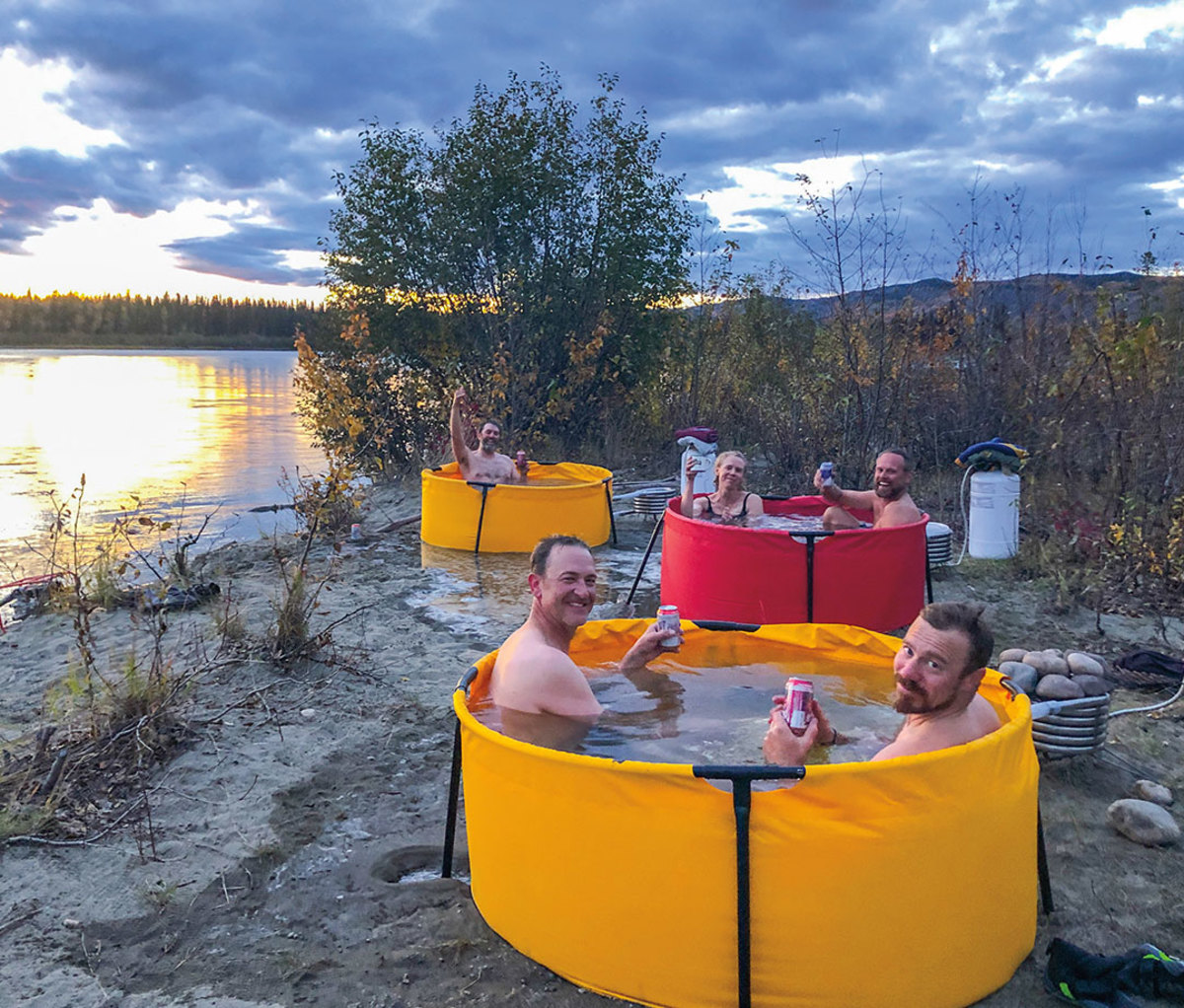
A few items, meaning cold beer from Yukon Brewing and bison-ricotta-mushroom lasagna made by a local chef. Oh yeah, and hot tubs. Knaack has chosen to use our group as guinea pigs to test how, and if, a trio of pop-up portable polyurethane holding tanks will work for rewarding tour groups. Pumping in river water and blasting it with a copper-coiled propane heating unit is backwoods alchemy, doing wonders for weary bodies as the sun sets, revealing wispy green streaks of the northern lights crowning thick stands of alder.
Self-support is officially over. Going minimalist for days has given way to giddy delight, stuffing ourselves with peach cobbler, downing beers, making bad man-soup jokes. I ponder whether gluttony, if well earned, should still be punished.
A couple of hours later, sated and pruned, I exit the tubs. Knaack, however, fires the heater for one more hot soak. “There’s not much I could say was bliss in my life, but this is it,” he says, as much to this place as to any of us.
from Men's Journal https://ift.tt/3iFg0Yn


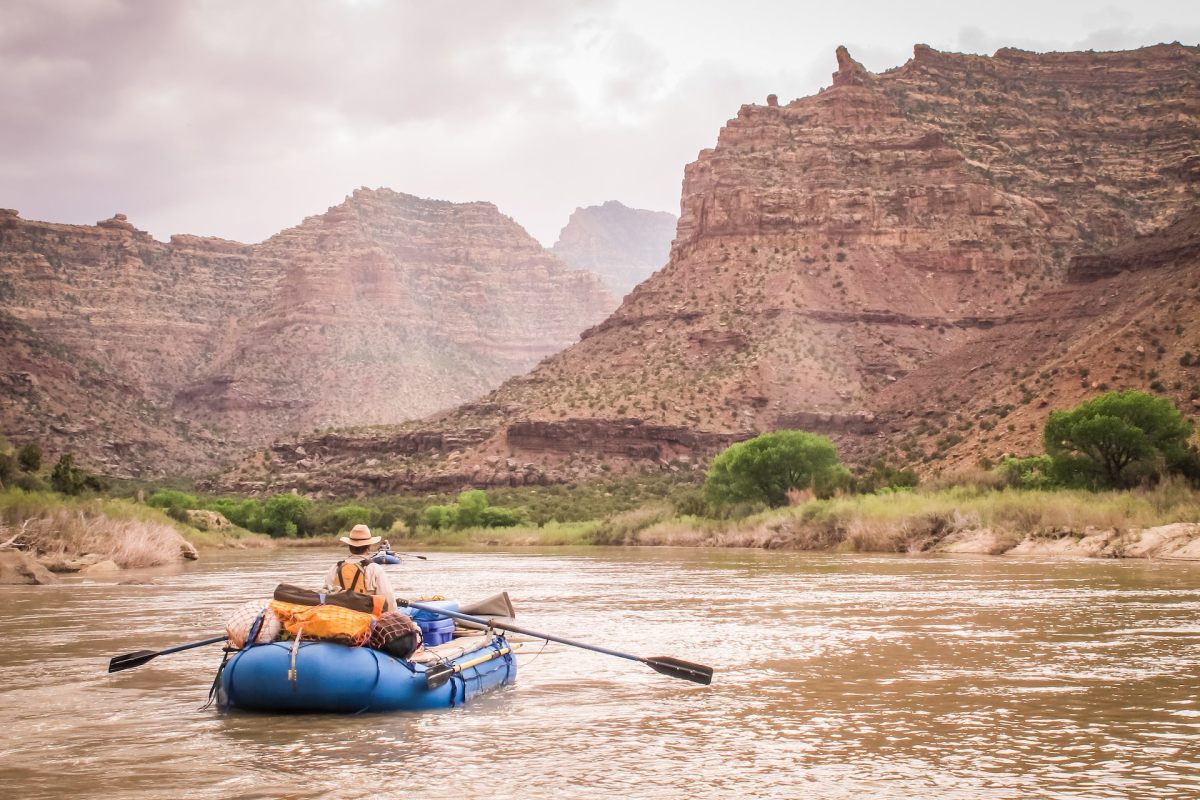




0 comments